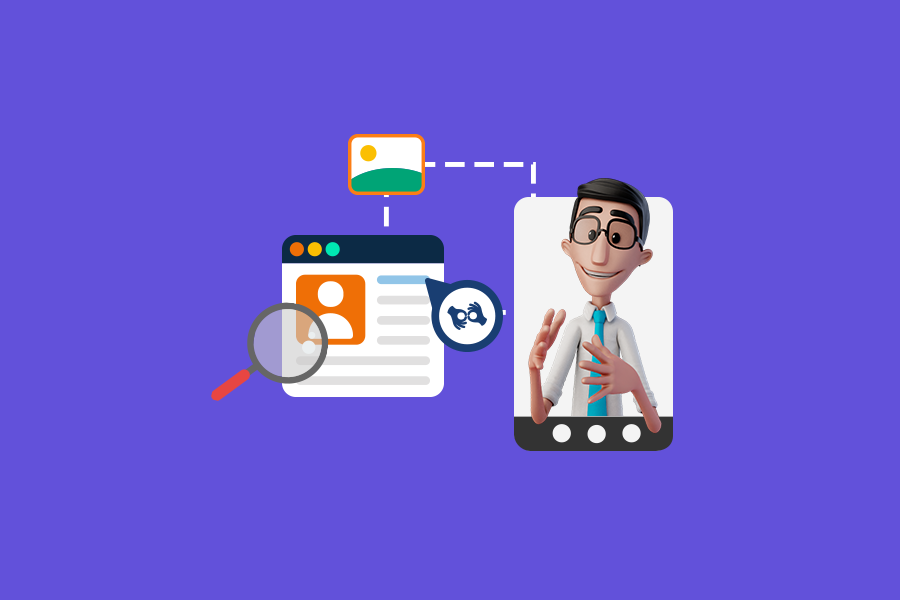
How accessibility reflects your company values

Would you eat at a restaurant that has a sign saying “We don’t accept people with disabilities”? Or would you shop at a store that says “we don’t sell to deaf people“? Nowadays, especially with the evolution of communication channels, it is quite unlikely that a brand would embrace this argument, as it would easily become a viral scandal on the internet, causing irreversible damages to its image. Yet, what if we told you that the lack of concern for accessibility is the same as living by these values, but without actually saying it?
That’s right. When a company does not think about being accessible to people with disabilities, it is closing its doors to this audience.
What does the law say about web accessibility?
In 1990, the Americans with Disabilities Act (ADA) law was signed. Its purpose is to make sure that people with disabilities have the same rights and opportunities as everyone else in all areas of life, including having access to information by digital means. That’s where digital accessibility takes place!
However, even with the fines for the non-compliance of this law, unfortunately, we are still far from ideal. Especially in the digital environment, where brands want to grow at any cost, the exclusion of people with disabilities is evident, since less than 2% of websites have adequate accessibility resources in the USA.
The lack of accessibility creates numerous barriers!
Although it is not usual to find companies that say “we don’t sell for people with disabilities”, they still face numerous digital barriers when browsing the internet to purchase or other daily activity.
Here goes some examples of accessibility mistakes found on the vast majority of websites:
- Lack of ASL (American Sign Language) accessibility for the deaf and hard of hearing people.
- Videos without subtitles or ASL interpreter, which also creates a barrier for deaf and hard of hearing people.
- Lack of alternative text for images, which affects blind and visually impaired people.
- Low contrast. This practice can be a challenge for everyone, but especially for those with color blindness and other visual impairments.
The lack of these and other accessibility features reflects negatively on the brand, as they are failing to show an inclusive value. When a person with disabilities cannot access a website, they will likely take their money elsewhere, and tell family, friends and their entire network about their bad experience!
Click here to check out tips on how to build an accessible designed website.
What consumers think about the lack of accessibility:
Accessibility is also aligned with ESG practices (environmental, social, and corporate governance). In this case, it represents the “S” of “social”, as it is directly associated with the inclusion of all people in society.
It is also linked to the SDG (Sustainable Development Goals) number 10, which is about reducing inequality.
A website with digital accessibility has many benefits and one of them is to send a different message: your brand is committed to inclusion! This can be a powerful tool to build your business. According to research conducted by Accenture, on average, brands that invest in key areas of inclusivity reported 28% higher return and 30% higher economic profit margins than their less inclusive competitors. And, in another survey, carried out by McKinsey in 2021, two out of three Americans related that their social values affect their purchasing decisions. Also, 64% of consumers are more likely to purchase from a brand that values diversity and inclusion.
So, to sum up, people care about your organization’s values! When you ignore a segment of your audience, you are saying that they are not considered potential customers, but when you embrace accessibility, you send a strong message of inclusivity.
How to promote the culture of accessibility within companies
We already understood the impacts of accessibility and inclusion on the branding, but this issue should be discussed mainly inside the organizations. After all, it’s important to show to the audience what they really believe and apply.
How many people with disabilities work in your company? What accessibility features are offered to your team? It is essential that there are policies for the inclusion of people with disabilities in the recruitment of employees. And so that they can work and perform their work with comfort and equality, it is necessary to provide the relevant accessibility solutions for each case.
You can also start promoting the culture of accessibility in your brand today, impacting both your internal and external audiences, and working on your values!
Here at Hand Talk, for example, we make sure our employees with disabilities are the protagonists of their professional journeys, participating and leading projects, designing their career plans and always being open to get their feedback on our accessibility and inclusion solutions! Learn more in our Blog!


